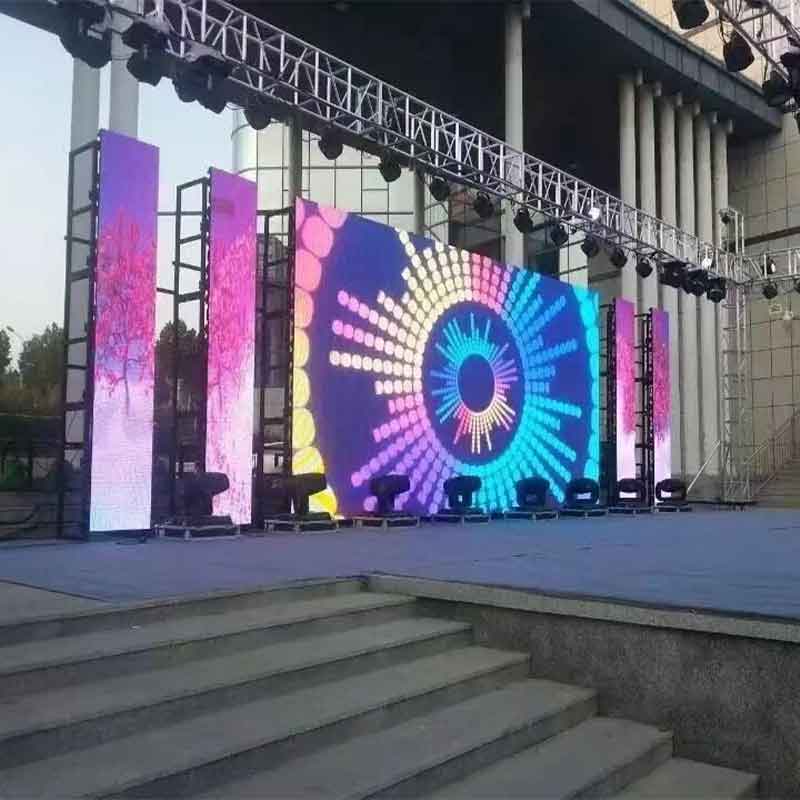
As businesses increasingly adopt LED display screens for advertising, events, and promotions, a crucial decision arises: Should you rent or purchase the screen? Both LED screen rental and out purchase offer distinct advantages, depending on your specific needs, budget, and long-term goals.
This article provides an in-depth comparison of renting versus purchasing LED screens, exploring key factors such as cost, flexibility, and usability. It will help you determine the best approach for your business while incorporating industry-leading practices.
1. Understanding LED Screen Rental
A. What Is LED Screen Rental?
Renting LED video walls or screens involves short-term access to high-quality equipment without the commitment of ownership. Businesses typically use rentals for:
- One-time events, like concerts or trade shows.
- Temporary marketing campaigns.
- Seasonal promotions.
B. Advantages of Renting LED Screens
-
Cost-Effectiveness for Short-Term Needs
For businesses with occasional requirements, renting is far more economical than purchasing a screen.
-
Access to the Latest Technology
Rental services often provide the latest LED screen solutions, ensuring your display is cutting-edge.
-
No Maintenance Hassles
Maintenance, repairs, and updates are typically handled by the rental provider, saving you time and effort.
-
Flexibility and Scalability
Whether you need a small outdoor LED sign or a massive LED video wall, rental services allow customization to suit your event or campaign.
2. Understanding LED Screen Purchase
A. What Does Purchasing Involve?
Buying an LED display screen gives your business complete ownership, making it ideal for long-term and consistent use.
B. Advantages of Purchasing LED Screens
-
Long-Term Savings
For frequent use, purchasing is more cost-effective in the long run compared to repeated rentals.
-
Custom Branding Opportunities
Owning a screen allows you to customize it according to your branding requirements without restrictions.
-
Continuous Availability
With an owned LED screen, you can deploy campaigns or content anytime without coordinating with a rental provider.
-
Asset Ownership
A purchased LED video wall becomes a valuable business asset that can be depreciated for tax purposes.
3. Comparative Analysis: Rental vs. Purchase
| Criteria | LED Screen Rental | LED Screen Purchase |
|---|
| Cost |
Affordable for short-term needs. |
Higher initial cost, but cost-efficient long-term. |
| Flexibility |
High, as sizes and configurations vary per event. |
Limited to the purchased screen. |
| Technology Access |
Access to the latest models. |
Risk of obsolescence over time. |
| Maintenance |
Covered by the rental provider. |
Responsibility lies with the owner. |
| Customization |
Limited by rental terms. |
Full control over customization. |
4. Key Factors to Consider
A. Frequency of Use
- Rent if your need is sporadic, such as quarterly events or seasonal promotions.
- Buy if you require daily or weekly usage, such as in-store displays or permanent neon digital signage installations.
B. Budget Constraints
- Rent if your business has a limited budget for upfront investments.
- Buy if you can allocate a significant initial investment for long-term savings.
C. Type of Business
- Event Companies: LED screen rentals provide flexibility for diverse client requirements.
- Retail Businesses: Permanent LED display screens are ideal for branding and customer engagement.
D. Technology Upgrades
- Rent if staying updated with the latest technology is critical.
- Buy if your content doesn’t require frequent upgrades to the display system.
5. Case Studies: Rental vs. Purchase in Action
A. Event Planning Company: Choosing Rental
An event company organizes annual trade shows. They rent LED video walls tailored to each event's size and theme, avoiding maintenance costs and ensuring they use the latest technology.
B. Retail Chain: Opting for Purchase
A retail chain invested in LED display screens for its stores to showcase promotions and branding. The permanent installation saves costs over multiple campaigns and enhances in-store experiences.
6. How to Choose the Right Option
A. Evaluate Your Needs
Determine the frequency, purpose, and scale of your LED screen usage.
B. Consult with Providers
Discuss your requirements with reputable providers to compare rental and purchase plans.
C. Calculate Long-Term Costs
Use ROI analysis to determine whether renting or purchasing offers better financial benefits.
D. Consider Environmental Impact
Outdoor LED signs and LED screen rentals often use energy-efficient technology, contributing to sustainability. Ensure the provider offers eco-friendly options.
7. Blended Approach: When to Rent and When to Buy
Some businesses adopt a blended strategy, purchasing screens for frequent, smaller-scale needs and renting larger LED video walls for big events. This approach maximizes flexibility while minimizing costs.
Conclusion
Deciding between LED screen rental and purchase depends on your business's unique needs, goals, and budget. Rentals are perfect for flexibility and short-term use, while purchasing offers control and cost savings for long-term projects.
By evaluating factors such as frequency, scalability, and maintenance, businesses can make informed decisions that align with their strategic objectives. Whether you choose to rent or buy, leveraging LED display screens ensures your brand remains impactful and engaging in a competitive market./ Source
:: بازدید از این مطلب : 10
|
امتیاز مطلب : 0
|
تعداد امتیازدهندگان : 0
|
مجموع امتیاز : 0

